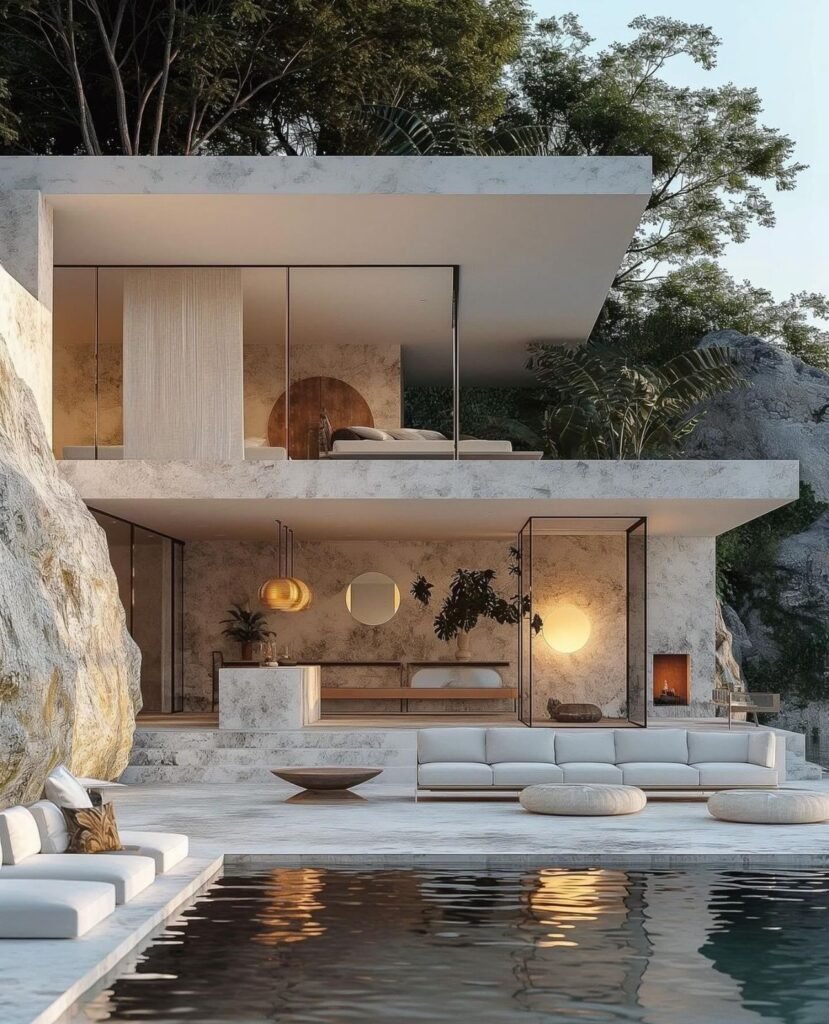Granite is a material that has stood the test of time. From ancient monuments to modern kitchen countertops, granite has proven its value in both form and function. But a common scientific question arises—is granite a pure substance or a mixture? In this in-depth article, we’ll explore granite’s composition, structure, and classification to determine how it fits into the scientific world of matter.

What Is Granite?
Definition and Overview
Granite is a coarse-grained igneous rock composed mainly of quartz, feldspar, and mica. It forms deep beneath the Earth’s surface through the slow crystallization of magma. Due to its natural origin and varied mineral content, granite comes in a wide array of colors and patterns.
Explore related content: Is granite homogeneous or heterogeneous?

Is Granite a Pure Substance or Mixture?
Scientific Classification
In chemistry:
- A pure substance is composed of only one type of element or compound.
- A mixture contains two or more substances that are physically combined but not chemically bonded.
Conclusion: Granite Is a Mixture
Granite is a heterogeneous mixture. It consists of visibly different minerals that are not chemically combined, making it not a pure substance.
Further reading: Is granite a mixture?
Granite Composition: What’s Inside?
Major Mineral Components
Granite typically contains:
- Quartz: Hard and transparent
- Feldspar: White, pink, or gray
- Mica: Biotite (black) or Muscovite (silver)
These components give granite its distinct colors, patterns, and durability. The varying proportions of these minerals make each granite slab unique, reinforcing its classification as a mixture.
Geological Formation
Granite is an intrusive igneous rock, meaning it forms underground where magma cools slowly. This slow cooling allows large crystals to form, which are easily distinguishable and contribute to its heterogeneous texture.
Characteristics of Granite Stone
Key Physical Properties
- Hardness: 6 to 7 on Mohs scale
- Color Range: From light whites and greys to deep blacks and greens
- Durability: Extremely heat- and scratch-resistant
Visual Identity
These characteristics of granite make it perfect for both structural and decorative uses. Its mineral makeup ensures that it is not uniform in appearance, further confirming that granite is a mixture.
Natural vs Engineered Granite
Natural Granite
- Quarried from the Earth
- Naturally heterogeneous
- Requires periodic sealing granite to maintain appearance
Engineered Granite
- Made from crushed granite and resins
- More uniform and consistent
- Often easier to maintain
Granite in Home Design
Granite Countertops
Granite’s visual appeal and functional benefits make it a top material for countertops. From polished white granite countertops to dramatic black granite countertops, there are countless options for modern and traditional kitchens alike.
Learn how to choose the right one: Granite countertop
Design Pairings
- What color cabinets go with granite countertops?
- What color paint or walls go with brown, black, and green granite countertops?
Practical Comparison with Other Materials
Granite vs Quartz
- Granite: Natural, heterogeneous, heat-resistant
- Quartz: Engineered, more uniform, non-porous
Granite vs Marble
- Marble is more porous and softer
- Granite is more durable and stain-resistant
Granite vs Soapstone
- Soapstone is homogeneous and matte
- Granite is heterogeneous with polished variety
In terms of natural stone countertop comparison, granite continues to be a top contender.
Aardwolf Granite Solutions
Premium Offerings
- Aardwolf granite countertop collection
- Wholesale granite slabs
- Installation services
- Granite pricing guide
- Best Aardwolf granite colors for residential and commercial spaces
Use Aardwolf’s material-handling tools like lifting clamps to safely manage slabs during installation.
Final Verdict: Granite Is a Mixture, Not a Pure Substance
Granite’s visibly distinct mineral grains and varied composition classify it as a heterogeneous mixture, not a pure substance. Understanding this helps in both scientific and practical contexts, from geological classification to choosing the right material for countertops and other applications.
So the next time you admire a slab of granite, remember: you’re looking at a complex, naturally beautiful mixture, not a single uniform material.

